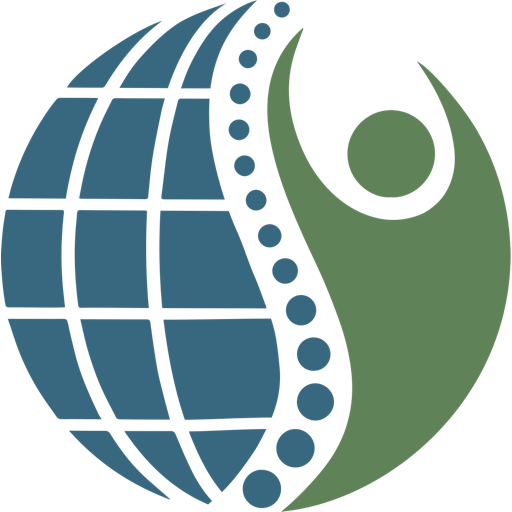The Power of Yoga
by Erin Moon, Co-Creator, World Spine Care Yoga Project
More research is coming out specifically around sleep, depression and pain management with mindful movement, mindfulness practices, and breathwork. Often these studies include Yoga postures or Thai Chi, Qigong, Many have people coming together as well as doing individual practice. I think this is the alchemical mix. It follows the bio (body), psycho (mind), social (connection/community) so perfectly. Continued and sustained practice, is fundamentally important.
Erin Moon, co-creator of the Yoga Project, guides students in simple stretches during a training session in Botswana
Biomechanics
The focus for World Spine Day 2019 suggested to “Get Spine Active’.
But what does this mean when your mobility is being limited in some manner? What are your options? Yoga postures are not only what you see in extremely fit young people. In the postures (asana) there is great biomechanics, functional range of motion exploration, and isometric holds available to everybody. Our bodies were made to move and not only is the body happy and better functioning when we keep moving but our pain becomes less frequent and the duration of pain outbreaks decrease. This is the case particularly when we learn to explore mindful movement which is inherent in yoga postures. Think of any posture as a basic form to explore not a pose to master. It is, after all, called Yoga practice, not Yoga perfection.
Psychological
The opportunity to catastrophize when you are in pain is very real and very understandable.
Using mindfulness techniques and breathwork (including observation, concentration), can help on a fundamental level in learning what the actual state of the body and the mind are. These two things are not separate, and it is through the separation of these two aspects of our physiology and psychology that we truly suffer. When we slow it all down and learn to be part of our experience in a deeper way this can really shift perspectives from ‘I am always in pain’ to ‘today I feel a little less pain’, ‘this part of me feels pain but the rest of me is okay’.
Erin Moon guides students through breathwork during a yoga training session in Botswana
Also, breath and mindfulness have been shown to affect the nervous system, which is the system involved in pain management. The theory - and more research demonstrates this - that when you calm the nervous system and provide tools to come back to stasis faster, after a stressful event, the overall well being of the person improves (quality of life), sleep improves, depression decreases, and pain management increases.
Heart Rate Variability and vagal nerve tone have research findings that suggest something as simple as breath pacing (five-six count in, five-six out with a released belly) can actually make a difference! This breath technique has been part of yoga for thousands of years and it is only one practice of many!
Social
Coming into a community with others who may be feeling pain, isolated by limited mobility, frustrated by not being able to contribute, can make a world of difference! This we all know and feel. We do better when we are together.
Barrie Risman, co-founder of the Yoga Project, guides students through a morning practice during a session of yoga training in Botswana
This is why I think Yoga can be so beneficial. You will often see different slow, mindful movement, breath, and meditation-oriented work saying they have improved outcomes in diseases like diabetes, heart disease, etc. The things they have in common? They, on a weekly, bi-weekly, or even daily basis: get someone out of the house (which means getting dressed tying shoes, etc.), walking to a class (or to the car - which means getting in and out of the car, too). Then they are with others who, like themselves, move with mindfulness, do some nervous system activation and downregulating, take some deep breaths together, sit in silence together and then maybe have a little chat and go home. Not a bad model for good living!
All of these elements are fundamentally part of the practices of Yoga and therefore part of the World Spine Care Yoga Project.
For more information about the Yoga Project, click here.




